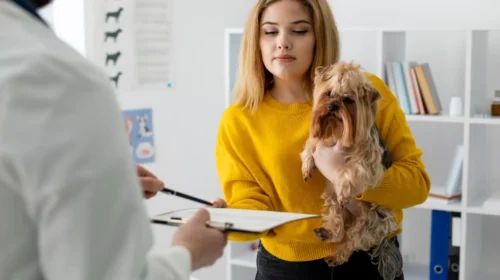Some helpful tips for walking your dog
You likely had fantasies about walking your dog before you got it. Your four-legged companion likely walked obediently along your side on a leash. They would look at you lovingly and follow your every command.
You got your dog, and all of the fantasies vanished. My dog has to stop and go on every piece of grass. Is it because he has to stop and smell every blade of grass? Although it can be frustrating, don’t let him go!
Walking your dog is good for their health and happiness. Walking your dog can keep him active and healthy and help with constipation. Walking your dog regularly can help prevent him from gaining weight. Walking your dog regularly can help reduce or eliminate destructive behavior. Dogs that don’t get enough exercise or feel drained or lack energy can dig holes in your yard and chew everything from your shoes to your cushions.
Walking with your dog on walks together can strengthen your relationship with them and allow them to interact with other dogs and people in a controlled setting. Socialization is essential for dogs. Dogs that have been socialized are more happy and friendly than dogs that aren’t. Unsocialized dogs can become anxious or fearful when meeting new people and animals.
We haven’t even touched on the health benefits of walking your dog. According to the New York Times, a study by Michigan State University found that 60% of dog owners who take their dogs for walks regularly met federal guidelines for moderate or vigorous exercise. Nearly half of those dog walkers get at least 30 minutes per day, and almost all of them do so on average five days per week. Only 30% of those without dogs get that amount of regular exercise.
What is it with your dog’s bizarre behavior on walks? Let’s look at some of the most annoying (and weird) things dogs do on walks. What do dogs do when they are on a leash? How can you help them?
Walking with a dog: Dog peeing
Why does your dog do it? Dogs tend to be territorial, and urine can mark territory. This communicates to other dogs that the dog has been there. Usually, marking begins in puberty.
Consult your vet first. It is important to confirm that the dog’s inability to go to the bathroom every 10 feet is not due to a bladder infection or marking. You can train your dog not to mark as often if it is a behavior issue. However, it may not be easy to get him to stop marking altogether. Dogs that haven’t been spayed/neutered are more likely to mark territory than dogs who have.
Rolling in the Stink
Why does your dog do it: Does your dog stop, roll, and drop-dead animals, garbage, or other stinky objects? Although it isn’t known why dogs exhibit this horrible behavior, it could be a trait that they inherited from wolves. They sniff the smell and then return it to their pack for further investigation.
What to? Keep your dog leashed while on walks. This is a good tip, regardless of whether they love to play in filth. You can teach them to obey the command “leave” and reward them with treats when they do. To avoid injury, do not pull on the leash too hard to get your dog away from the odorous object.
Leash pulling
Why does your dog do it? You’re too slow! You’re not moving in the right direction! Because he wants!
How to fix this behavior issue: Proper training can help. Use treats and positive reinforcement to get your dog to move at your pace. You can use a harness or head harness if your dog pulls. You can also train your dog to walk closer to you by giving them fewer leashes. They will think they are allowed to explore the area, so the longer they lead you, the less they will pull on your leash.
Lying down and refusing to move
Why does your dog do it? It could be because they are tired, sick, hurt, or simply plain tired.
How to examine your dog. Is the cement too hot? Is the cement too hot for them? Are they too hot? Give them water and let them cool down. If this doesn’t work, and your dog is not showing obvious signs of injury or discomfort, you can bring your friend home with treats. Before you embark on your adventure, be sure to consider your dog’s abilities and exercise needs. For example, an English bulldog will have different walking expectations than a Labrador retriever. Please do not force them to walk. You can always come back later to try again if they aren’t willing to walk. Injuries can result from forcing your dog to walk when necessary. It could become a serious problem if it continues to be a problem. Consult your vet to determine if you have a bigger health issue.
Walking back and forth
Why your dog does this: Your dog’s nose can be more powerful than yours. He can smell all the interesting smells of animals and people you cannot. You won’t even notice that he is following scent trails.
How to teach your dog to walk on the leash: Show your dog how to walk on one side and at a particular heel. To teach your dog to walk on a leash, you can use treats and verbal cues. Dogs love to sniff, so it’s a good idea to allow them to do this when they are comfortable. This will reduce the likelihood of your dog getting tripped up and help you keep the leash close to your body.
Leash bite
Why your dog does this: Your dog gets so excited when you take them for a walk. Your leash suddenly becomes a tug of war toy.
How to teach your dog to relax when he sees his leash, rather than getting too excited:
Walking with your dog is likely to be a highlight of his day. You can enjoy the walks as much as your dog by training him and understanding his motivations. Remember that your dog will enjoy a walk as much as you do. Even though his behavior may be annoying at times, it is okay for him to be a dog.




